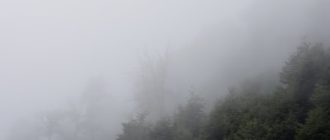Directly south of Louisville, just off Interstate 65 and not far from Cave City, Mammoth Cave National Park sits nestled in the rolling, wooded hills of west-central Kentucky. Cedar trees dominate the landscape around the park, broken only by grazing cattle, small tobacco fields, and immense limestone outcroppings.
Limestone is what makes this area special–a 600-foot thick slab of the stuff. Looking at the many road-cuts along the road to the park, one can see the layers, each possessing its own characteristics and each named after the location where these characteristics were identified: St. Genevieve, St. Louis, Paoli, Aux Vases, Karnak. Each layer is incredibly older than its sibling just above. And limestone is where Kentucky caves are found.

Once inside the park, the scenery changes from touristy to natural beauty. Well-groomed roads with wide, grassy shoulders wind through deep forest. Whitetail deer browse the edges of ancient cemeteries and wild turkey are everywhere. Mammoth Cave is one of the most beautiful in our national park system. Sprawling over more than 52,000 acres (most of it dense hardwood forest) the park features a diverse community of plants and wildlife; from the smallest insects, to birds, to aquatic life, to cave life. It is home to dozens of endangered or threatened species.
In spite of hosting two million visitors a year, the roads through Mammoth Cave National Park are surprisingly free of traffic. But near the park entrance there is a constant bustle of activity, where campers, picnickers, and cave tourists crowd through the visitor center and ticket window. Every few minutes, loudspeakers announce the beginning of the next tour and groups of strangers are always exiting the park.
During the summer, the park offers tours into several different entrances and family groups with children jogging with the group. Once you enter the park, you will be treated to the sight of a myriad of bats feasting on insects and marmots. During the winter, mammoth bull bats force their way into the park and young bats hone in on their parents until one decides to leave the nest and fly up the passages. I once watched a baby pipistrelle change color from blue to red before disappearing through the transom.
During your visit, you will be greeted by the gorgeous, historic wooden buildings of the preserving park. The gift shop offers many fine souvenirs of the park’s past. Local lore suggests that the Cave People gave the park its name. It certainly explains the Ruins, which have been inhabited by tribesman since the beginning of time.
If you are interested in antiques, Visakha is the place to shop. It is located way out in the western part of the park and has forty parking lots that are lined with hotels and resorts. The stores bring in revenue of over $800,000.00. Visakha also acts as a ranger station for the tours and it houses a museum, which is a favorite of tourists.
The park knows a lot about itself but as you can see, there’s a lot that remains unknown. Perhaps it is one of the reasons why it has earned the reputation as one of the world’s top 10 natural wonders.” [http://www.nptimes.com/news/news/story/mb-guide-exploring-the-park-you-must-see/id towed|]
Tucked away in the town of Kershawville, Georgia, the park is safe from the dangers of sun and weather. For those who enjoy picnics, the grassy lawns and pleasant weather are perfect for beverages. The cascading water provides a nice backdrop for the picnickers.
The historical site is one of the best places to visit in the area. Here you will see a log cabin built by a Georgia survey team of 1800 children. Their station was in a glacier. Today the cabin remains and a museum allows you to enjoy a slice of history.
The group remains warm and dry today because of the continuous stream from leaks which drained the central heating system. The report of a survey team is not a priority in Kershawville. Water is the organization’s top priority. Today, the town relies on water from the river and reservoir to satisfy its needs.
Once you have learned about the group’s history you can begin to understand the place. The first meeting of the group took place in 1847 and its roots go back to its beginning.Surveying the area was a challenge as most of the people could not speak English. The park is a collection of 3 distinct parts. Kershaw Reservoir, Wild Plant Trail, and unison with commode. This area has not been luck of a park.












